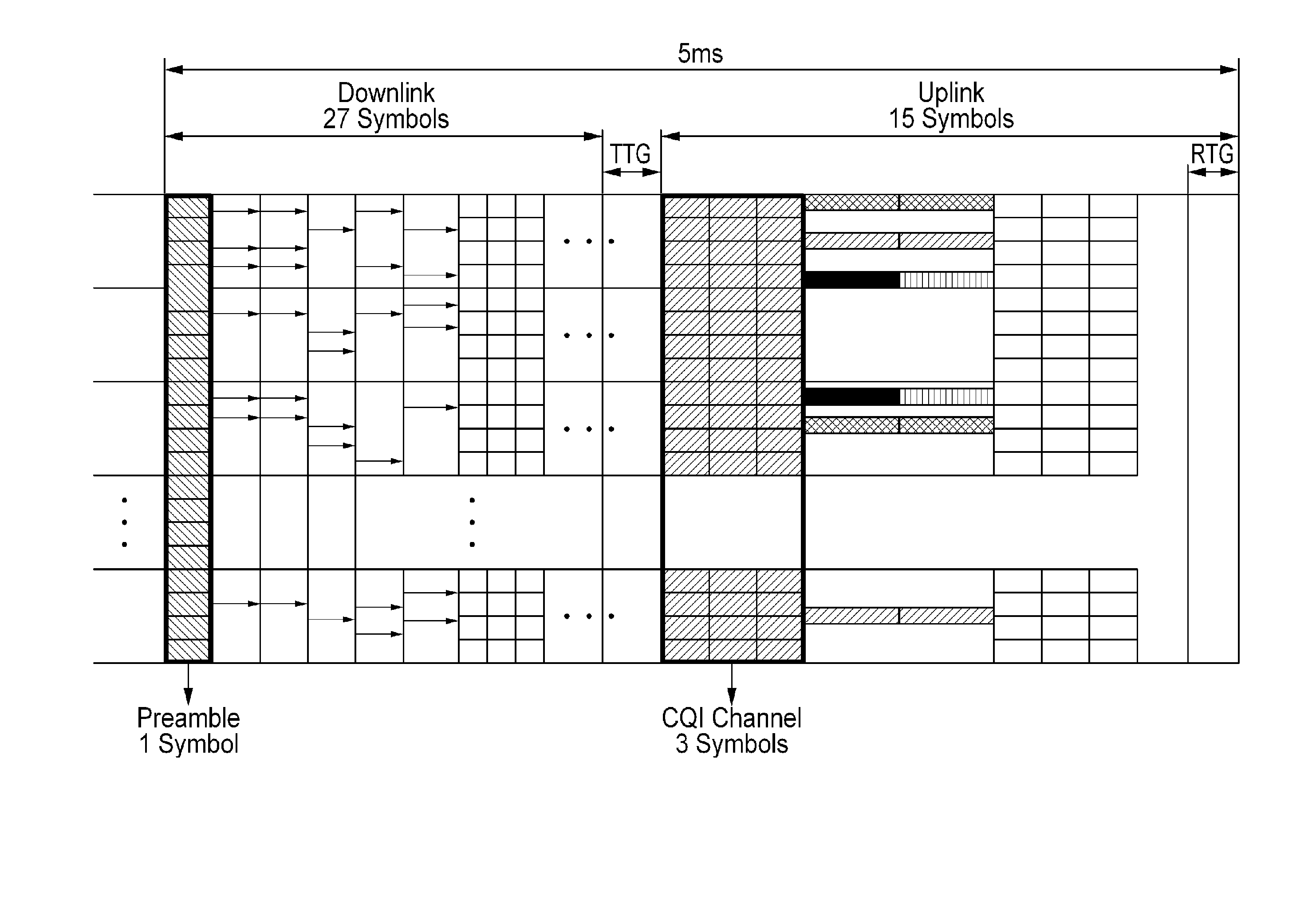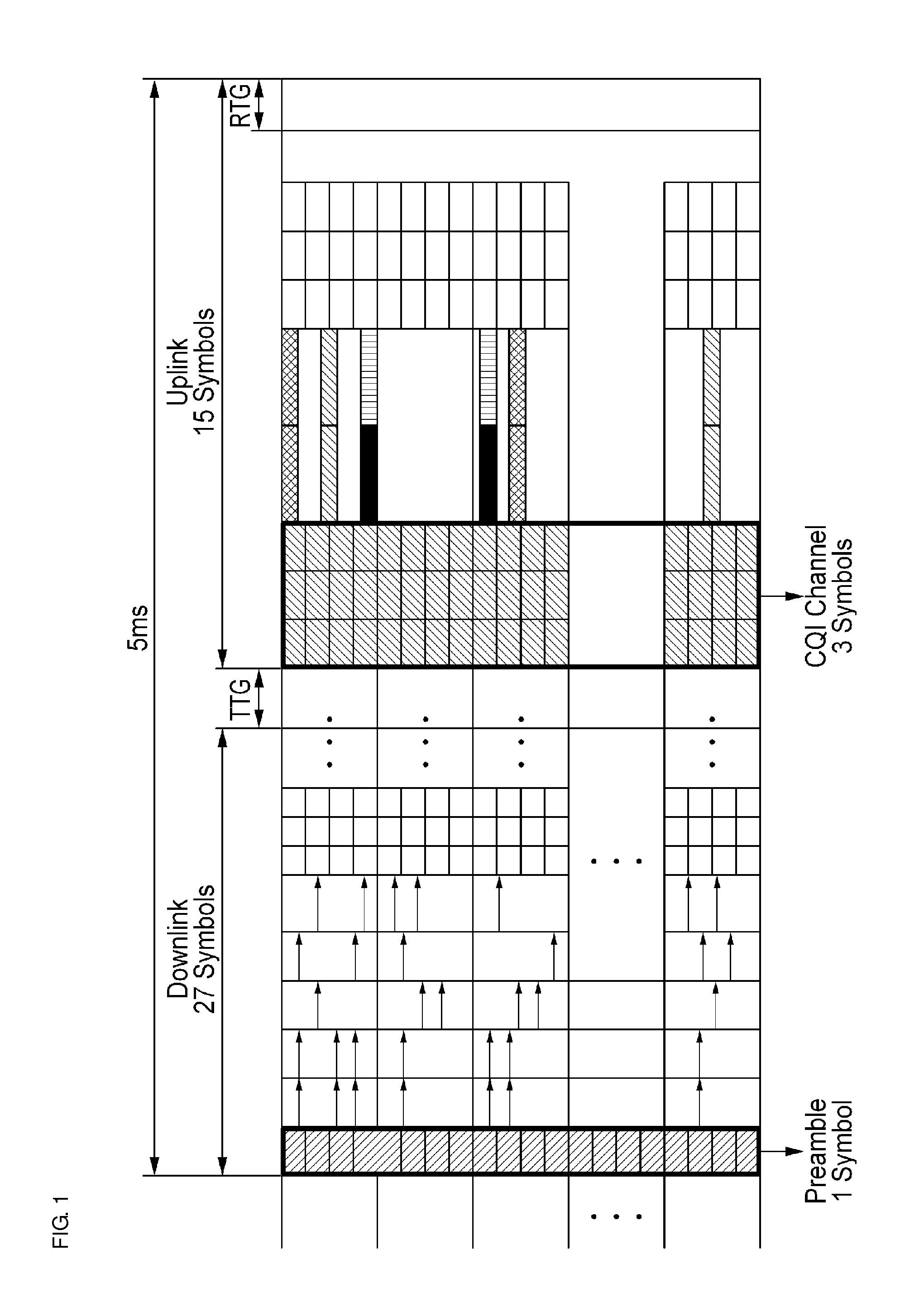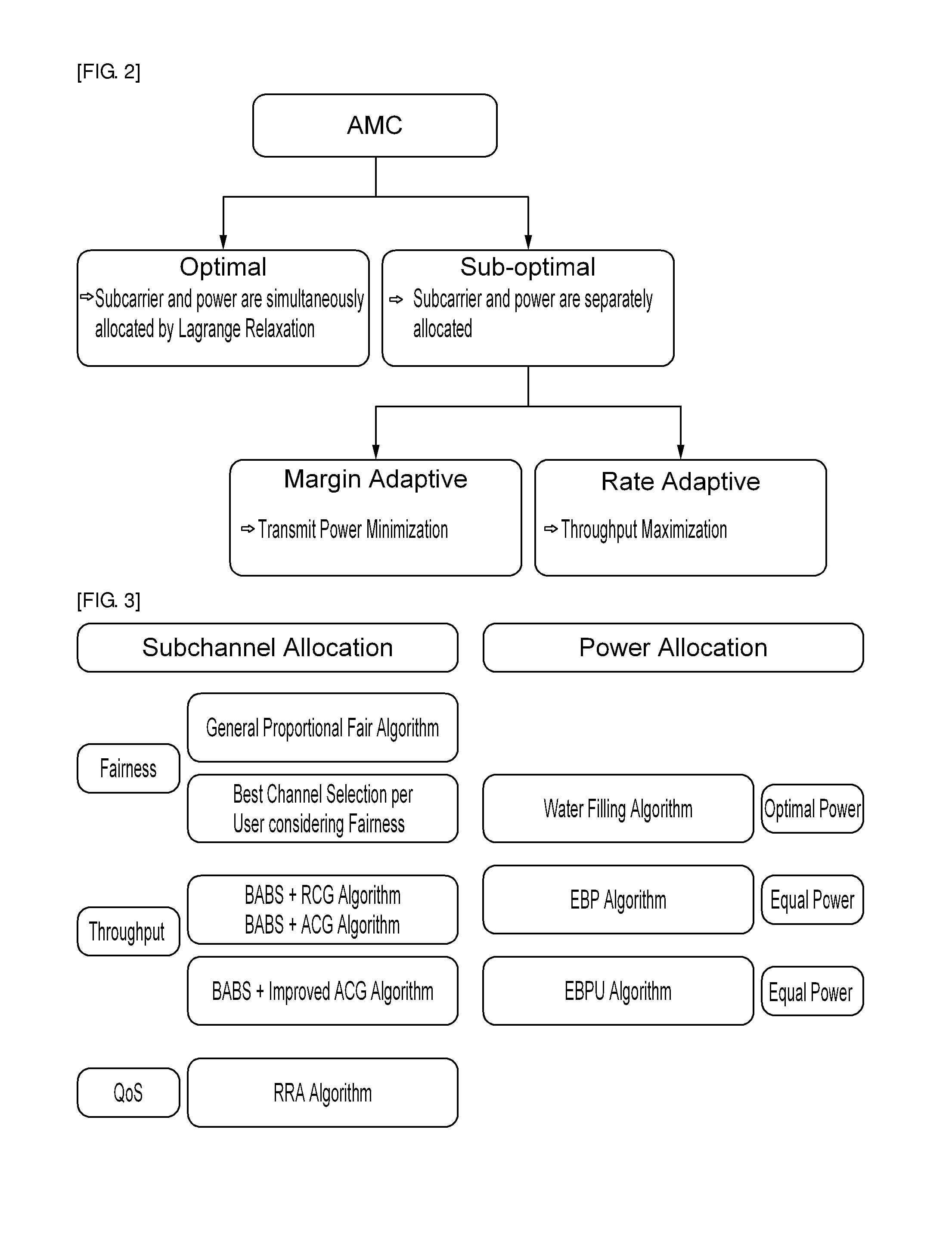Method for dynamic resource allocation of uplink and downlink in ofdma/TDD cellular system
a cellular system and resource allocation technology, applied in the field of orthogonal frequency division multiple access/time division duplex (ofdma/tdd) cellular system, can solve the problems of inability to adjust the channel coding, inability to calculate, and inability to provide infinite frequency bands to a system, so as to improve the sector throughput and fairness of 802.16
- Summary
- Abstract
- Description
- Claims
- Application Information
AI Technical Summary
Benefits of technology
Problems solved by technology
Method used
Image
Examples
Embodiment Construction
[0071] Reference will now be made in detail to the embodiments of the present general inventive concept, examples of which are illustrated in the accompanying drawings, wherein like reference numerals refer to like elements throughout. The embodiments are described below in order to explain the present general inventive concept by referring to the figures.
[0072] Hereinafter, a method for dynamic resource allocation of uplink and downlink in OFDMA / TDD cellular system according to the present invention will be described in detail with reference to the accompanying drawings.
[0073]FIG. 10 is a flow chart showing a method for dynamic resource allocation of uplink in an OFDMA / TDD cellular system according to an embodiment of the invention.
[0074] As shown in FIG. 10, the method for dynamic resource allocation of uplink in an OFDMA / TDD cellular system according to an embodiment of the invention includes the steps of: determining the number of sub-channels which can be allocated to each u...
PUM
 Login to View More
Login to View More Abstract
Description
Claims
Application Information
 Login to View More
Login to View More - R&D
- Intellectual Property
- Life Sciences
- Materials
- Tech Scout
- Unparalleled Data Quality
- Higher Quality Content
- 60% Fewer Hallucinations
Browse by: Latest US Patents, China's latest patents, Technical Efficacy Thesaurus, Application Domain, Technology Topic, Popular Technical Reports.
© 2025 PatSnap. All rights reserved.Legal|Privacy policy|Modern Slavery Act Transparency Statement|Sitemap|About US| Contact US: help@patsnap.com



